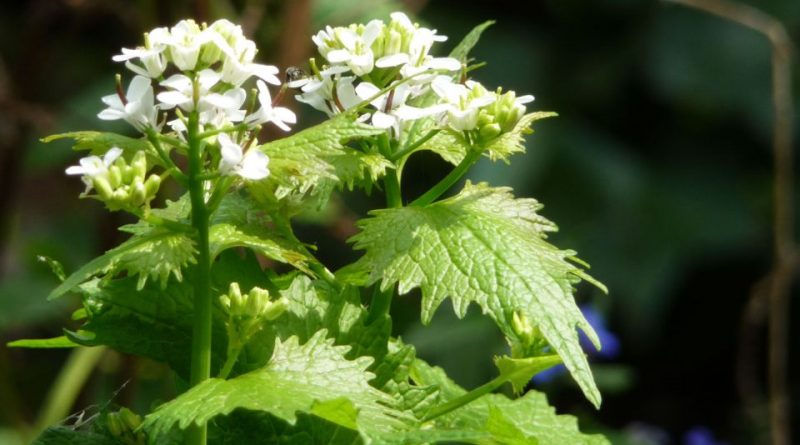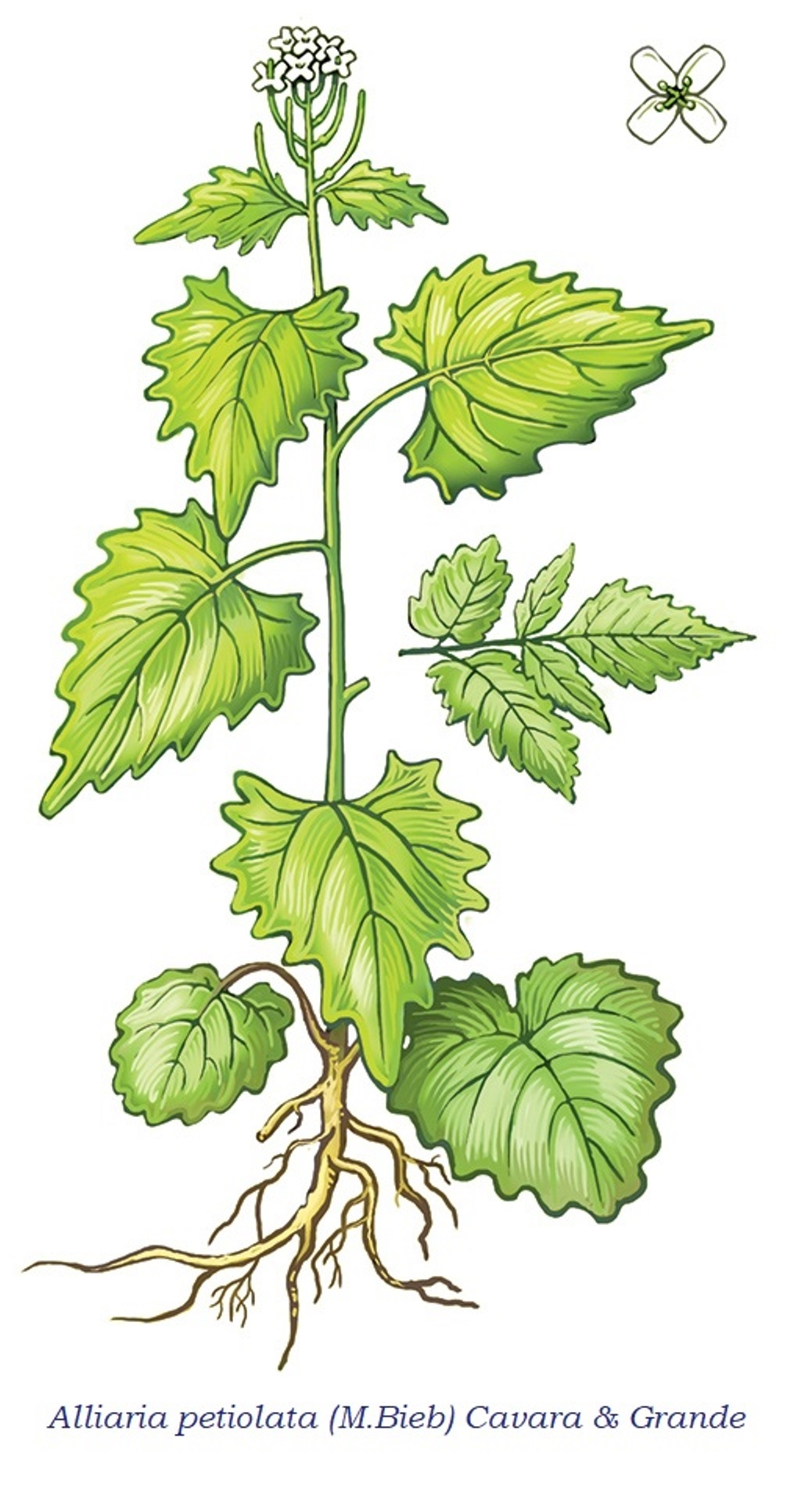Alliaria petiolata
Alliaria petiolata
The garlic mustard (Alliaria petiolata (M.Bieb) Cavara & Grande) is a herbaceous species belonging to the Brassicaceae family.
Systematic –
From a systematic point of view, it belongs to the Eukaryota Domain, the Plantae Kingdom, the Spermatophyta Superdivision, the Magnoliophyta Division, the Magnoliopsida Class, the Dilleniidae Subclass, the Capparales Order, the Brassicaceae Family, the Brassicoideae Subfamily and therefore to the Genus Alliaria and to the Specie A. petiolata.
The terms are synonymous:
– Alliaria alliaria (L.) Britton;
– Alliaria officinalis Andrz. ex M.Bieb .;
– Erysimum alliaria L .;
– Sisymbrium alliaria (L.) Scop.
Etymology –
The term Alliaria comes from allium garlic, due to the smell of crumpled leaves.
The specific epithet petiolata comes from petiolus (diminutive of pes pes, base) small foot, peduncle, from which petiole: with leaves equipped with petiole.
Geographical Distribution and Habitat –
The garlic mustard is a plant that has an area of paleotemperate origin, for which it is widespread in Europe, Asia (China and northern India, up to the Himalayas) but also in North Africa.
In Italy it is present both in the marine (rare) and mountain (common) areas and is found in the bush in partial shade and in the humid forests of broad-leaved trees, or in any case rich in nitrogen and organic substances (synanthropic plant), at altitudes between 0 and 1700 m asl It is absent in Sardinia.
Description –
Alliaria petiolata is a biennial herbaceous species, more or less shaggy, with dimensions of 30-80 cm in height. This plant, if wrinkled, gives off a characteristic garlic smell.
The stems are erect, herbaceous, leafy, down hairy, hairless at the top.
The leaves are dark green in color, with a toothed margin, with the lower petioles long with an ovate lamina with a corded base and the triangular apices with a shorter petiole.
The flowers are white and are tetramer (4 sepals-petals) actinomorphic diapetals. The corollas are 5–8 mm wide; the sepals are 4, greenish and shorter than the petals (approximately: 2–3 mm); the petals are 4, up to 6 mm long, white in color and contain a lot of nectar to attract bees; the stamens are 6 in number.
They have superior ovary and bi-carpellar which is therefore located in the upper part of the perianth.
Pollination takes place by means of butterflies, moths and bees.
The antesis is between April and June
The fruit is a narrow slender and patent capsule (erect siliqua, tetragonal), bivalve-trivalve, about 5 cm long and 2 mm thick.
The seeds are small, black and elongated.
Cultivation –
The garlic mustard can be grown from seed, sown broadcasters, and can be profitably grown in areas up to 1500 m. s.l.m.
You prefer fertile soils, with good endowment of organic substance, well dreanti with exposure to partial shade.
Uses and Traditions –
Alliaria petiolata, as well as being a common Alliaria, is known in areas where it grows like Aglina grass and wild Lunaria.
This species plays an important ecological role in that, in Europe more than 60 species of insects and fungi use it as a source of sustenance, also including the larvae of some lepidoptera.
Alliaria is used in pharmacies: in fact it contains active ingredients useful in phytotherapy (essential oils, glucosides and enzymes) for its vulnerable, expectorant and diuretic properties.
The seeds, with a vague taste and scent of mustard, can be used to stimulate appetite, but also as deworming and revulsive. While flowers are used against asthma, the leaves are used as a diaphoretic purifier.
It can be prepared as an infusion, juice, poultice and lotion. Essential oil (similar to that of garlic) is obtained from the roots.
It is also used in industry to produce different dyes.
Of this plant are used for food purposes: flowers, fruits and seeds (similar to mustard); in fact the fresh leaves and the tender tops can be used in mixed salads, in soups and as an aroma, the seeds to be used as a mustard substitute.
Preparation method –
The garlic mustard leaves can be used in the kitchen in salads.
In England it is quite common to use this plant to flavor sandwiches. It seems that they are more digestible than those of garlic.
Young spring shoots, together with other vegetables, can be used to prepare soups; these roasts are also used in savory pies or wraps.
In the Middle Ages it was used in corned meat (to cover the unpleasant smell after a few weeks of storage without a refrigerator).
Guido Bissanti
Sources
– Acta Plantarum – Flora of the Italian Regions.
– Wikipedia, the free encyclopedia.
– Treben M., 2000. Health from the Lord’s Pharmacy, Tips and experiences with medicinal herbs, Ennsthaler Editore
– Pignatti S., 1982. Flora of Italy, Edagricole, Bologna.
– Conti F., Abbate G., Alessandrini A., Blasi C. (edited by), 2005. An annotated checklist of the Italian vascular flora, Palombi Editore.
Warning: Pharmaceutical applications and alimurgical uses are indicated for information purposes only, they do not in any way represent a medical prescription; therefore, no responsibility is accepted for their use for healing, aesthetic or food purposes.


